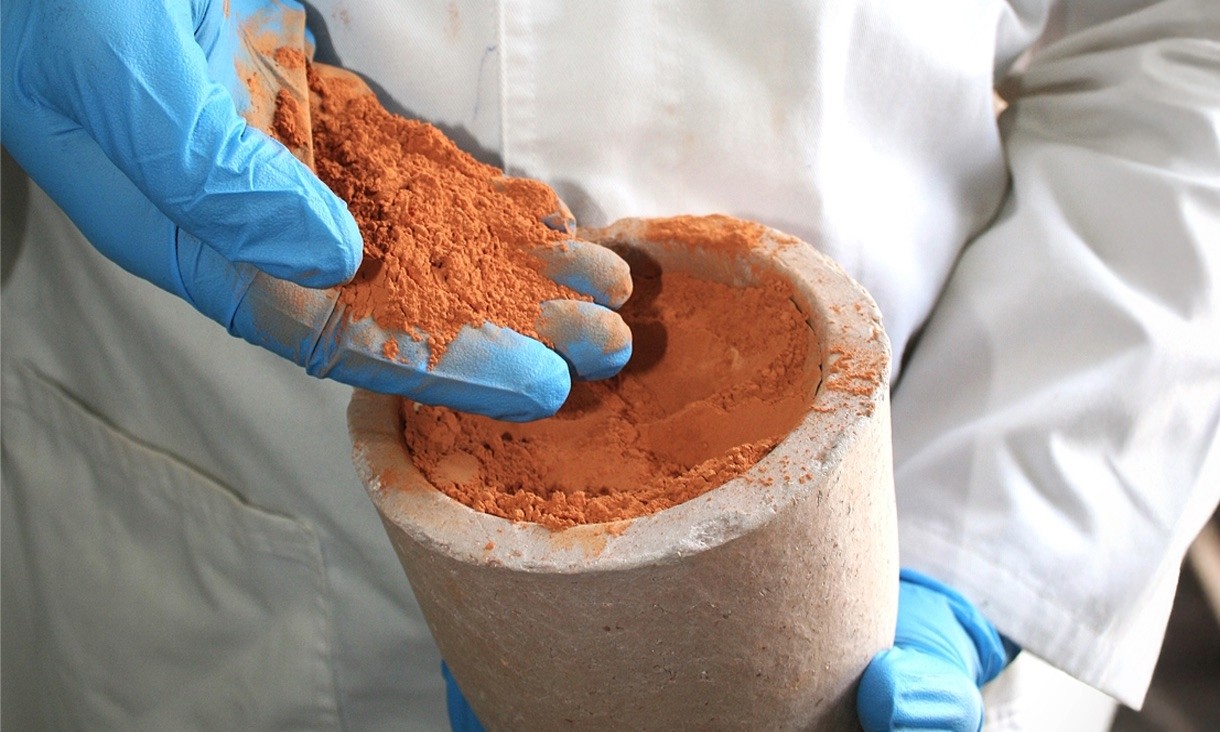2025-06-05 ロイヤルメルボルン工科大学(RMIT)

The combined clay mix after being heat treated, ready for use as a cement supplement.
<関連情報>
- https://www.rmit.edu.au/news/all-news/2025/jun/calcined-clay
- https://www.sciencedirect.com/science/article/pii/S0950061825014825
コンクリート用補助セメント材料としての天然低品位イライトを改良する組み合わせ技術 A combination technique to improve natural low-grade illite as supplementary cementitious material for concrete
Roshan Jayathilakage, Chamila Gunasekara, David Law, Sujeeva Setunge
Construction and Building Materials Available online: 19 April 2025
DOI:https://doi.org/10.1016/j.conbuildmat.2025.141334
Highlights
- Combining low-grade illite with kaolinite to 1:1 ratio provides 28-day SAI > 1.
- Co-calcination of clays increased amorphous content by 18 %.
- Co-calcined clays formed a separate Fe phase.
- The separate Fe phase lowered the porosity by 41 %.
- CASH in the co-calcined blend had a 24 % higher Si/Ca ratio.
Abstract
Kaolinite-rich clays are the most utilized clay type as a supplementary cementitious material (SCM) due to their higher pozzolanic reactivity. However, these higher-grade clays may not be available due to widespread usage in other industries and geographical locations. Hence, this study investigates the potential of combining low-grade illite clays, characterized by low clay mineral content (<30 %) and reactivity, with higher-grade kaolinite clays to enhance pozzolanic properties and mechanical performance in clay-cement blended cementitious mixes. An optimal clay mixing ratio of 1:1 was found to yield improved strength (3 % higher than the control mix) and reactivity particularly when clays were co-calcined(13 % higher bound water content). Analysis indicated that the co-calcination process increased amorphous content by around 18 %. The high Si/Ca ratio (24 % higher than separately calcined and mixed) in the C-A-S-H component of the co-calcined mix is also visible with more amorphous Si. A separate Fe phase was formed, which improved the pore structure of the co-calcined mix (reduced porosity by 41 %). This contributed to an 8 % increase in compressive strength compared to the clays separately calcined and subsequently mixed. The findings suggest that the combination technique effectively enhances the utility of low-grade clays, providing a viable strategy for mitigating reliance on high-grade resources.



